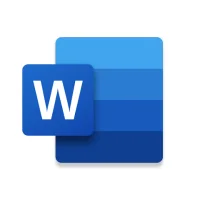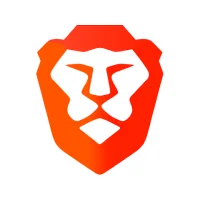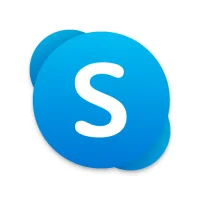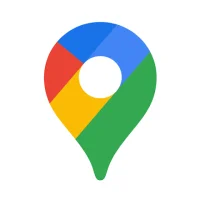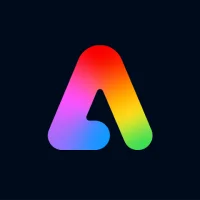How can I make use of lessons or tutorial videos within the application?
14 min read Utilizing Lessons and Tutorial Videos in the Application - written by Hamza Bose, Senior Content Marketer May 06, 2024 21:28
Utilizing Lessons and Tutorial Videos in the Application
1. Introduction to lessons and tutorial videos
Therefore, the most favored format of digital data file is a video. Because videos present knowledge through two different but blended paths, which are audio and visual. The sound contains the voice of the teacher. Through it, the teacher communicates the knowledge that will be taught. Also, in the video, a screen display will appear, and/or a moving image will be subject to or without the guidance of the teacher's voice. This moving image also functions as one of the main learning resources of another piece of knowledge, which is not only shown through voice. With the hypothesis that the value is greater than the standard value set of 50%, it has been tested and the results also show that students can participate widely in academic supervision in that multimedia-oriented environment.
As an educator, you have the opportunity to teach anytime and anywhere. Also, as a teacher in a certain school, you have experiences which you can transform into a digital product that can be readily accessed by those who require it. For educators who are motivated to be tutors in using their lesson data to produce a digital product, it need not always end in the form of an instructional video, but could also end in a presentation such as a PowerPoint or a Word file, an image that is then formed into a .pdf or .jpg file, and so on. However, in the .pdf or .doc digital file, the person who needs to take the lesson, of course, needs basic digital skills. Also, the educator should also be able to use digital graphic software to process it. While on the digital video, readers do not require special skills to watch and/or listen to it.
2. Accessing lessons and tutorial videos
A user can visualize component details easily and effectively with the videos provided in the application. It is preferred to investigate the problems with videos because problems that can occur during development (such as callbacks triggered first, then triggers those linked to user interactions, breaking cell controls with local data features, adding drop-downs, etc.) can be understood more efficiently with videos than texts. However, accessing these pages with videos outside the application requires searching and focusing on the right video. Every developer wants to have the ability to focus on the correct place at the first trial, and of course, not all developers are fond of this search. That is why the users prefer to spend time on the application rather than leaving the page and searching. However, by using the lesson videos in the application, developers can be involved only in operations and do not encounter various problems with appropriate features.
One of the sections in the Infragistics Ignite UI Help provided in the application is called Tutorials and Videos. It is divided into two tabs, 'Videos' and 'Lessons'. The 'Videos' tab contains a list of Vimeo videos made by Infragistics and uploaded onto their channel. They are listed in no particular order and the list includes all videos made about the feature you are interested in the most. In the videos list, there are videos for every type of control from jQuery to Angular. Update related videos are regarding the latest version. The 'Lessons' tab contains links to lessons for inquiries and tasks you have. Each lesson is actually a search query that looks for the respective term within the documentation of the component you were viewing when you opened the lesson. The number of search results is displayed under the name of the lesson. This research found out that covering for the application in text, lessons, and videos equals covering for all the tabs in the application and all components shown on them.
3. Navigating through lessons and tutorial videos
In the context of a mobile system, another approach had shown how the technical video can be navigated using multiple representations in the form of a timeline as well as summary slides generated from speaker's slide thumbnails. Such features had allowed the children to revisit sections in the video that they found important during their programming without manually sliding through the video. Another approach for analyzing how users navigated within these tutorial and learning videos in the context of computer science has shown that when looking for a specific management, the subjects needed mechanisms to locate that part in the video, then to review and consolidate what they have learned from that specific section. In conclusion, how children's utilization of shared tutorial videos made by professional educators for applying them in other activities, such as in this paper's literacy exercises.
Next, we looked at how the lessons and tutorial videos can be navigated while being viewed by the children. The children using Vidino had two options. First, they can watch the video in normal as well as slow motion playback. By using the slow motion playback, the children have more time to observe the nuances and patterns in the video. This feature also benefits children during the technical activities. Second, in addition to navigating the video by preceding and proceeding the video thirty seconds at a time, another design dimension is the provision of visual cues to show where one might navigate the lesson within the video. The study that we had conducted has shown to us that children needed to see and to use end-to-end navigation into the lesson. This indicates that children, within the activities, navigate to a certain point of the video to review and analyze said point.
4. Interacting with lessons and tutorial videos
After some time has passed from the following exercises, it is useful to get students interested. For example, if after the lecture about graph drawing, we give the students different graphs in different ways and ask them to analyze each case. I have practiced this approach many times and I noticed that the majority of the students became very interested in determining the way of producing the graphs. From the next lesson, I presented each graph with the information used in their construction. I refused to present data or to tell how to produce them. If the student came up with a proposal, I presented the step-by-step construction in GI/GE software. After the final 3rd, students were given homework to find out the mathematical laws that describe the 3 relationships. (In the T1 video, I presented the laws: d is proportional to the force, and d^2 is proportional to the force^2.) In the T3 video, I challenged the students to determine the constants of proportionality, while knowing the pairs (d, independent, F) of T1 and T2 tables.
After each lesson, it is recommended to discuss it, to summarize widely, and to answer the questions from the tests. It is necessary to summarize the student's experience, to find and clarify the most important moments that demand detailed work from the student. The connection of related subjects can be realized by starting one chapter based on fundamental concepts and comments. For example, after a course-related sentence about magnetic fields and the torque acting on a current in a magnetic field, we will discuss an example when the current-carrying conductor is not standing on the same plane that contains a magnetic field. This is because the torque rotates the conductor around the magnetic field induction and line of conductors. After the lesson, more detailed work is necessary, especially in the physics laboratory or during work on research problems. It is useful to do assignments and laboratory work in small groups that stimulate students to be more independent and to handle the problems themselves, although there are many professors who do not support such an approach.
5. Troubleshooting and support for lessons and tutorial videos
Enterprise and higher tiers can provide a customer support URL for their app that takes users to a company support form, webpage, or email. Customer support URLs get added as a single field on the App Extension Configuration page for packages and extensions. When completed, users can select the help video link on the lesson or tutorial detail page. For all tiers, users can send an email to the customer support address listed on the configuration page to request help or report issues. The phone number and operating hours for your enterprise or higher tier users' support centers get automatically added along with the URL, so users know how to contact support during business hours.
If users experience a problem with playing their lesson or tutorial video, you can help diagnose the issue by providing Lightning web components, Apex classes, or email support. Currently, there is no way for users to troubleshoot issues themselves, but you can provide a Help button on your lesson or tutorial detail pages that links to your website or support email. Enterprise and higher tiers can create a custom support URL for their app. To submit a help request, users can click the support request link. Requests go to the email that is listed on the help form on the following page. You can also see the customer support email and add custom URLs in the App Extension Configuration page for your package or extensions. To request help, users open any lesson or tutorial detail page. For enterprise and higher tiers, users can request help from the Help button on the Ways to Learn detail page.
User Comments (0)
Popular Apps



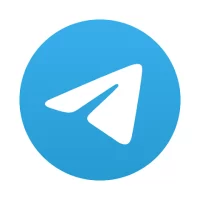






Editor's Choice


